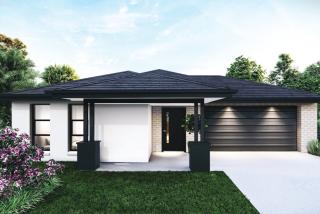Class 1a vs 1b: What Property Investors Must Know Before Building a Rooming House
Navigating Australia's building classes is critical to unlocking high-yield co-living investment returns and avoiding costly compliance mistakes.
What’s the Big Deal About 1a and 1b?
If you're eyeing the booming demand for co-living investment properties or rooming houses across Australia, you’ve likely heard the terms Class 1a and Class 1b or at least you should have.
These aren’t just bureaucratic buzzwords they’re the legal backbone that determines whether your shared accommodation project is compliant, insurable, and even rentable.
Under the National Construction Code (NCC), getting this classification wrong can mean costly retrofit upgrades, invalid insurance, or even council enforcement.
So what’s the difference, and what does it mean for your next investment property?
Understanding Class 1a: The Standard Aussie Dwelling
A Class 1a building is what most of us think of when we picture a home — a detached house, a townhouse, or a duplex. These homes are designed for:
Fire safety requirements are relatively minimal typically smoke alarms and a single point of egress. Investors running dual occupancy properties or typical rentals generally fall into this category.
But here's the catch: once you start renting rooms to more than two unrelated people, things change.
Enter Class 1b: The Rooming and Co-Living Category
A Class 1b building is designed for small-scale shared accommodation — think rooming houses, co-living spaces, or even some Airbnbs. These buildings cater to:
Because of the density and potential fire risk, Class 1b properties require stricter fire safety compliance, including:
-
Hardwired smoke detectors in all rooms and hallways,
-
Emergency lighting and illuminated exit signage,
-
Fire-rated walls and doors between rooms,
-
At least one accessible room with disability-compliant facilities.
If your property doesn’t meet these standards and you’re running it like a rooming house you’re risking both safety and liability.
Why This Matters for Investors
The market for cash positive investment properties like rooming houses and co-living builds is growing fast especially in high-demand suburbs near job centres and universities. These properties can return 7–12% gross yields, often with minimal vacancy.
But without Class 1b compliance:
-
Your insurance may be void
-
Councils can issue enforcement orders
-
You could face fines or legal action
-
Financiers may reject funding on the basis of non-compliant usage
That’s why experienced investors ensure their builds are 1b certified from day one or work with specialists who can help them convert or reclassify existing stock.
When Do You Need to Build as 1b?
Generally, you’ll require a Class 1b build if:
-
You rent 3 or more rooms individually to unrelated adults
-
You accommodate more than 5 tenants (varies by state)
-
Each tenant has a separate lease agreement
-
You operate as a rooming house, co-living space, or short-term boarding arrangement
Many councils across Victoria, Queensland, and NSW also require specific planning overlays or operator licensing once a property is classified as 1b.
State-by-State Snapshot
|
State
|
1b Trigger
|
Investor Notes
|
|
VIC
|
Four or more unrelated residents
|
Must register as a Rooming House
|
|
QLD
|
Shared accommodation under one roof
|
Requires Class 1b build and fire safety upgrades
|
|
NSW
|
Boarding Houses under SEPP
|
Subject to planning controls and development consent
|
|
SA / WA / TAS
|
Case-by-case via zoning and council planning
|
Class 1b strongly advised for rooming or co-living
|
|
ACT / NT
|
Minimal legislation, but NCC still applies
|
Fire compliance essential
|
Compliance Is an Investment, Not a Cost
Yes, Class 1b properties involve additional build cost typically $20,000 to $50,000 depending on fire
compliance and access modifications. But these costs are usually offset by:
-
Higher rental income per square metre
-
Strong demand from tenants seeking flexible, affordable living
-
Increased interest from SMSF property investment buyers
-
Reduced vacancy risk due to housing shortages
In today’s tight rental market, co-living and rooming house investments are among the highest-yielding residential strategies in Australia. But they aren’t a set-and-forget asset — they demand precision in planning, building, and compliance.
Getting your building class right — Class 1a vs Class 1b — is the first and most important step in building a legal, insurable, and profitable property portfolio.
Ready to Invest in Co-Living or Rooming Houses?
At Aus Investment Properties, we specialise in high-yield properties, including co-living and rooming house builds across Australia. Our listings are handpicked for investors seeking cash-flow-positive opportunities.
Visit our website to view all our available investment properties: www.ausinvestmentproperties.com.au
Shared Living properties are complex, and the rules and regulations vary by state and council. This blog is for general use only and to give you an overview of the shared living rules and regulations across Australia.
_1752115352WpaHL-cover.jpg)
_1758680457EfP8W-card.png)
_1754959266HOub5-card.png)
_1751940993PbDjZ-card.jpg)
_1751333432LuNFZ-card.jpg)
_1748483094kMBGy-card.jpg)
_1741047172OoCi6-card.jpg)

_1764731815HUFUX.jpg)
_1764211036lHsm6.png)
_1762916285NoFl4.jpg)
_17623130443GJfk.jpg)
_1760408926gJ50A.jpg)
_17598783571Kaml.jpg)



